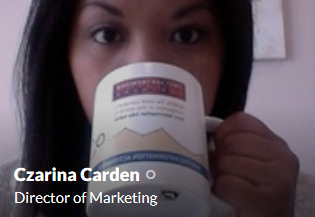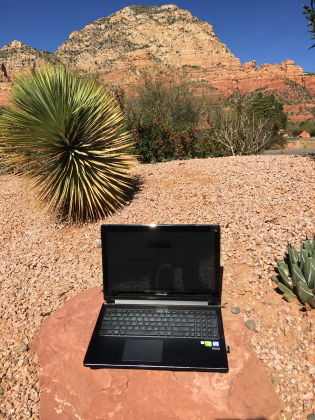Recently, a friend of mine shared an article with me about Automattic, the maker of WordPress, and its remote work culture.
We’ve been a virtual company since I started First San Francisco Partners (FSFP) back in 2007. Over the years as virtual companies have received more attention, I found that being the CEO of one makes me the subject of some curiosity. (One of the typical questions I get asked is, how do I know if people are actually working?) I always enjoy sharing the story of FSFP and how we make remote work work.
Leading a remote team has me curious to discover what other virtual company CEOs and leaders do to make their unique culture thrive. Reading Automattic’s story, I see we have many similarities and challenges, as well as some differences — for example, they have a physical company headquarters, and we don’t.
Communication and Connectedness
With the recent growth of FSFP’s team and client base, we’re now truly experiencing what it’s like to be a large, virtual team. Two aspects that we are regularly reminded of is that we need to communicate more internally — and do so in a smart, strategic way — and we need to foster a genuine feeling of “connectedness.”
Geographically, we’re distributed pretty much coast to coast and occasionally we go “international” when Malcolm Chisholm, our Chief Innovation Officer, is in the U.K. Communicating across time zones is a regular reminder we may be contacting someone at the very end of their day, while ours is still going strong. This is one of the things we keep in mind when we schedule internal calls and find that mid-day often works best for us.
Some of our team members are more in the “what’s happening this week at FSFP” loop than others, based on their role with our company. So we need to remember to communicate more regularly with our team. Earlier this year, we began sending quarterly update emails and scheduling video conference calls where we welcome new team members, provide sales and service updates, and also spotlight departments and team members.
“We believe in the spirit of transparency and make quarterly communications available to the entire company.”
Like Automattic, we believe in the spirit of transparency and make quarterly communications available to the entire company. We’re very candid in what we share, too — like revenue to date and future projections. Our only requirement for these calls is that people join using Zoom (more on that shortly), unless they’re in their car. Seeing everyone’s faces and watching the presenter as he/she speaks keeps us all more engaged and attentive.
There’s an App for That
For a while now, we’ve depended on remote-friendly tools and apps, like Dropbox for file-sharing and Trello, which our Marketing team used to organize this year’s editorial calendar for our (new this year) blog.
Back in 2014, we began doing video conference calls as a way to connect face to face (online). In 2015 after trying a variety of video tools, we ultimately settled on Zoom — both for larger calls, like the quarterly updates, and smaller ones like manager/employee one-on-ones.
Today, Zoom is indispensable for us; now we need to find our “next Zoom.” (Since the majority of our team members travel, whatever we add needs to be mobile-friendly.)
Some of our team members think Slack will be “it.” They’re using Slack daily and singing its praises for direct messaging and sharing updates in project and team-specific channels. I’m spending more time on Slack, too, and think it has real potential for us.

Czarina Carden, our Director of Marketing, enjoys her morning joe in an FSFP vision/mission/values mug.
A Virtual Vision
We recently developed FSFP’s vision, mission and values to formalize our principles for how we work with clients and one another. While our company tenets would work if FSFP was in a traditional office, I believe they really speak to the behaviors and characteristics we want to model as we grow our virtual culture. I see them as a key way we manage our remote workforce and align everyone around FSFP’s goals and our expectations.
Our vision, mission and values inform our recruiting efforts and set the stage for how we expect new team members to be a cultural fit. They’re key as managers evaluate team members’ performance against the “VMV” framework. And we reinforce our vision, mission and values in our quarterly update calls when we recognize team members who personify our tenets.

One of our Midwest-based consultants sent us this photo from her Sedona #workation.
Why We <3 Remote Work
Like Automattic, we find there are numerous benefits to being a virtual company. Here are just a few:
- We’re able to hire and work with (and retain!) the best and brightest in the information management consulting industry. (Automattic calls being virtual their “secret” to building a great team.) Our clients are distributed across the U.S., and many times clients appreciate having a consultant who doesn’t have to travel so far. Some of our team members, like Malcolm, are “digital nomads,” working from more than one place over the course of a year. And one of our Midwest-based consultants is currently enjoying a “workation” in Sedona, where she is working for FSFP, doing some sightseeing and also visiting family.
- FSFP’s structure makes for better work/life “integration.” (Notice how I didn’t say “balance,” because what is that anyway? We believe “balance” is something employees must figure out on their own.) With our flexible work environment — including part-time schedules for some — plus a renewed focus on adding more productivity tools, we’re seeing happier people servicing happier clients.
- No surprise here, but we save the cost of paying rent and buying office furniture and can run a more lean organization. This gives us the opportunity to put more money into business development and marketing and also our teams and the tools we use. We’re also more nimble and can ramp up practice areas and add consultants without having to lease an additional floor in a pricey San Francisco office building.
We’re still figuring out what’s “optimal” in terms of company-wide communications and what are the best channels to use.
Some Virtual Days Are Just Like That
Running a virtual company does have its challenges. Candidly, here’s what we’re still working on:
- We’re still figuring out what’s “optimal” in terms of company-wide communications and what are the best channels to use. We’re doing the quarterly emails and video conference calls now, but what about a monthly update … and would weekly be too much? Could we make other videos available to our team — for example, sharing information about our practice areas as a way to further educate team members and keep them aware of our differentiators?
- We want more of our team to experiment with and become fans of tools, like Slack, which means saying goodbye to comfortable, old alternatives. (I noted that Automattic is further down the technology and tools path than we are. But I take comfort in knowing they had a few false starts with Slack, including holdouts who were reluctant to give it a try.)
- We can’t do cubicle drop-bys or gather for a breakroom chat, so it can take longer to build deeper connections. And while we gain some efficiency from being virtual (i.e., fewer “office distractions”), this can be offset by us not showing enough empathy or really understanding and valuing everyone’s unique contributions.
The Automattic story ended with CEO Matt Mullenweg talking about how he can envision his company with thousands of remote employees. My vision is a little less grand; I think about what life will be like when our virtual team grows to 100 and how we will keep a group that large feel connected. Will it still be exciting? Yes. Will we still have challenges? Yes. Will we still work with great people and service great clients? Yes!


